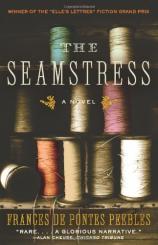Reading Group Guide
Discussion Questions
The Seamstress

1. How does their shared childhood as poor, religious, orphaned seamstresses shape Emília and Luzia’s unique perspectives on life?
2. How does access to water define political power in a country like Brazil in the 1920s and 1930s? How did the author’s descriptions of extreme drought affect your appreciation of modern conveniences?
3. How does the Hawk’s treatment of Luzia in the caatinga, or scrub, reveal Antônio’s true nature?
4. What does Emília’s reception into Recife society indicate about the esteem in which the Coelho family is held? To what extent is her mother-in-law, Dona Dulce Coelho, overly concerned about others’ perceptions of Emília?
5. To what extent are secrets responsible for the marriage between Degas and Emília and, much later, for its disintegration?
6. How does Luzia’s behavior in the initial aftermath of Antônio’s death explain her success in becoming the new captain of the cangaceiros? In what other ways does her behavior change once the Hawk is dead?
7. How do Dr. Duarte’s interests in phrenology and politics and his import-export business connect him to the government’s search for the Seamstress and the Hawk?
8. At various points in the novel, how does Dr. Eronildes Epifano represent both salvation and damnation to the cangaceiros? What role does Degas play in alerting Emília to Dr. Eronildes’s duplicity?
9. Given the Seamstress’s attacks on innocent people, to what extent are Emília’s efforts to communicate information to Luzia through newspaper articles and photographs ethically defensible?
10. How does the book’s final image connect with earlier images of bones in The Seamstress? Why do you think the author chose to close her book with this image?
The Seamstress
- Publication Date: August 1, 2009
- Genres: Fiction
- Paperback: 656 pages
- Publisher: Harper Perennial
- ISBN-10: 006073888X
- ISBN-13: 9780060738884








